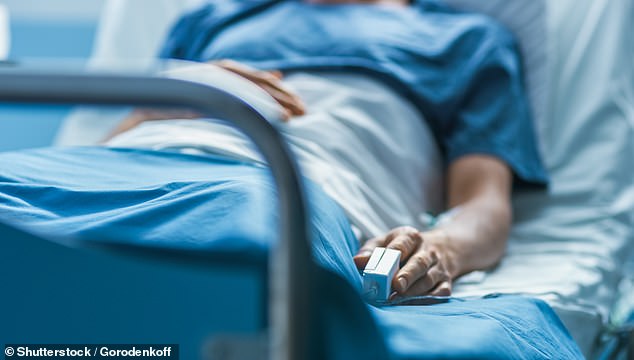- Strokes occur when blood clots cut off the blood supply to the brain.
- Physical therapy is often used as a way to improve a survivor’s muscle strength.
- Study shows activating a key nerve in the body produced three times greater improvement
Giving stroke survivors mild electric shocks along with intense physical therapy could help them regain better movement in weakened arms and hands, a study has found.
Strokes occur when the blood supply to the brain is interrupted by blood clots or a ruptured vessel and affect around 100,000 people in the UK each year.
They can often cause paralysis and debilitating weaknesses in the limbs, dramatically affecting the patient’s quality of life, for example whether they can eat and drink or even dress themselves.
Physical therapy is often used as a way to improve muscle strength and help stroke survivors walk more easily, but it can take years to recover.
Giving stroke survivors mild electric shocks along with intense physical therapy could help them regain better movement in weakened arms and hands, study says
Now, researchers at the MGH Institute for Health Professions in Boston have found that a six-week course of intensive physical therapy exercises combined with gentle stimulation of a key nerve in the body improved the ability to move weakened arms and hands by up to three times. . compared to receiving physical therapy alone.
And trials show that patients were still reaping the benefits a year after the treatment, known as vagus nerve stimulation. A pacemaker is placed in the chest and connected to a wire that wraps around the neck and delivers gentle electrical shocks to the vagus nerve, which runs from the base of the skull to the abdomen.

Strokes occur when the blood supply to the brain is interrupted by blood clots or a broken blood vessel and affect around 100,000 people in the UK each year.
It is thought that stimulating this nerve, which is an important part of the body’s nervous system, can help rewire the brain around areas that were damaged by the stroke and thus improve limb movements.
“Often after a stroke, people do not seek additional treatment, thinking that their current impairments are permanent,” says the study’s lead author, Teresa J. Kimberley. ‘This is not true. Paired vagus nerve stimulation opens a new avenue and a new hope for these patients.’
A team at Sheffield Teaching Hospitals NHS Foundation Trust is now trialling a treatment that stimulates the vagus nerve using a wearable pacemaker-like device and a wired earpiece, hoping it could offer a revolutionary new way for survivors of a stroke improve your symptoms. .


